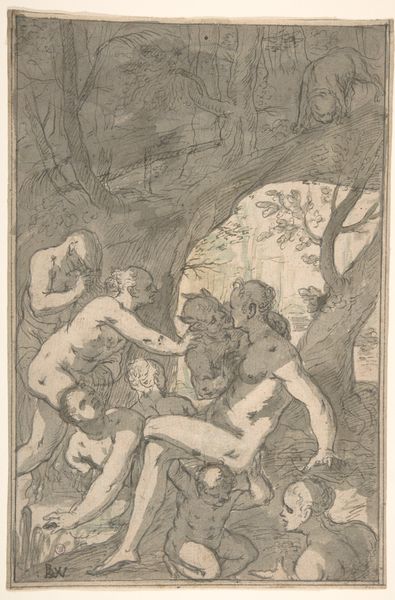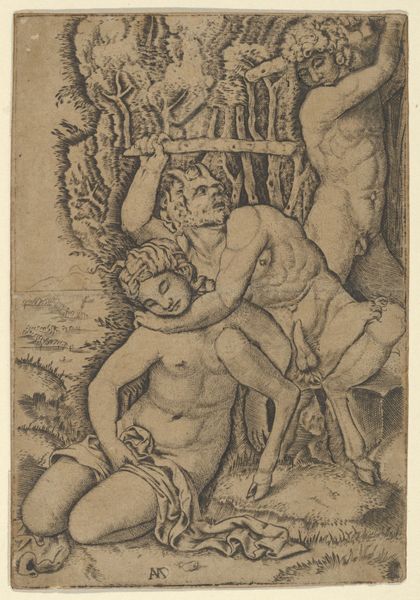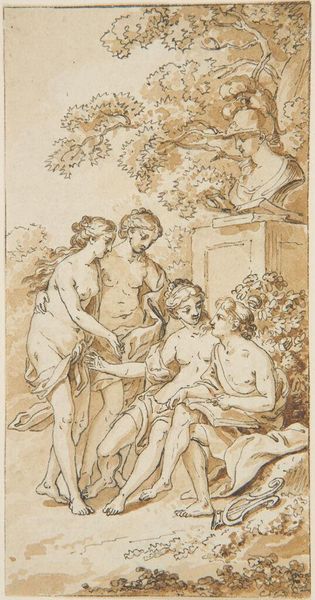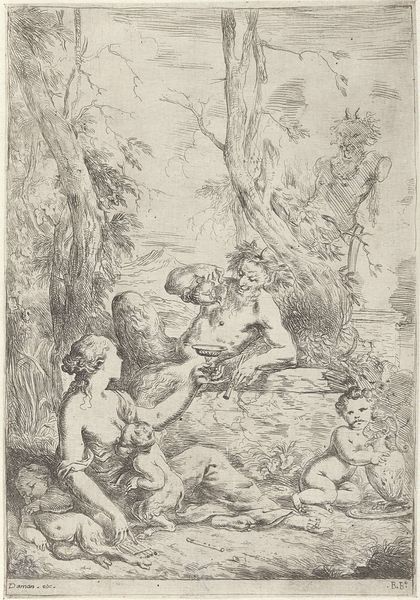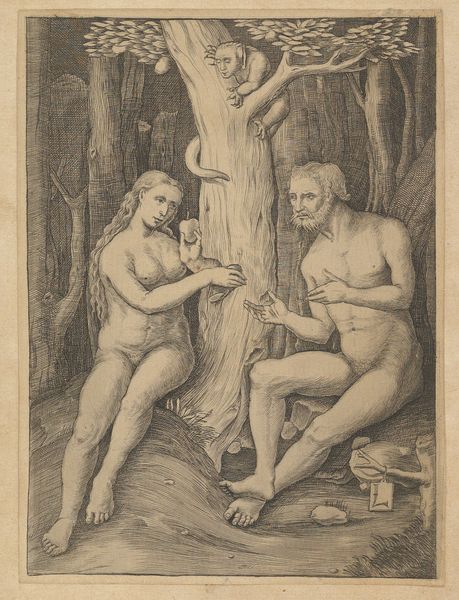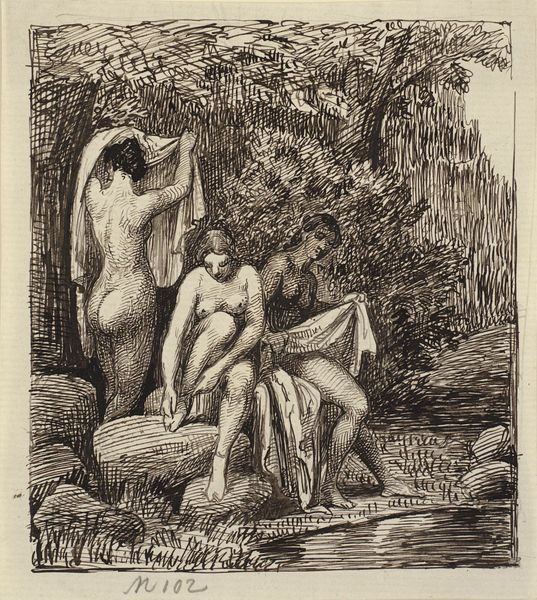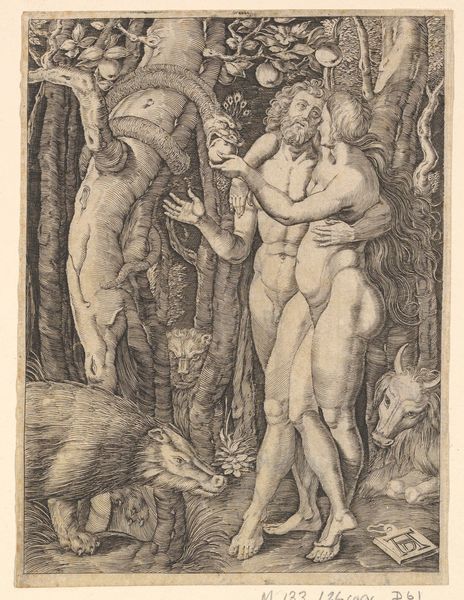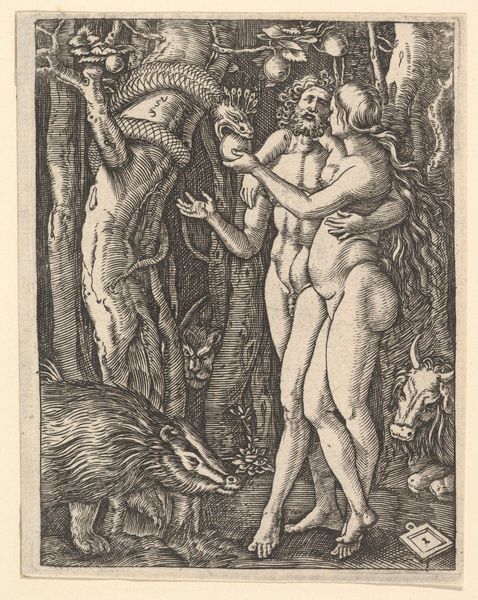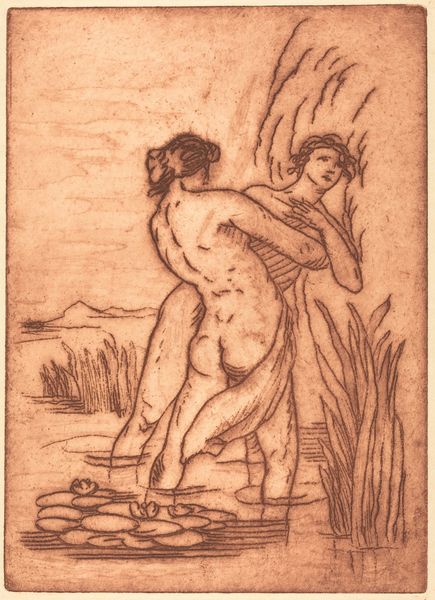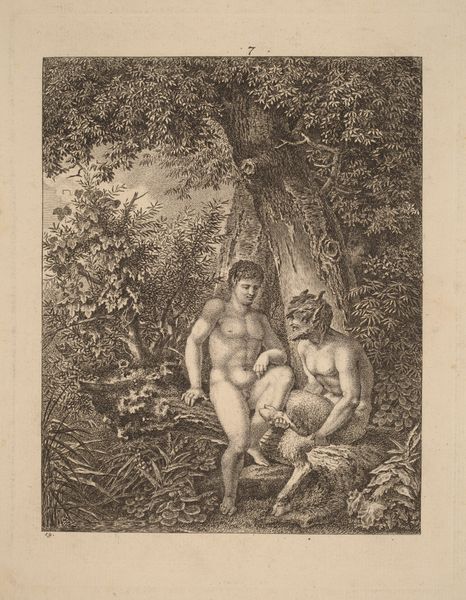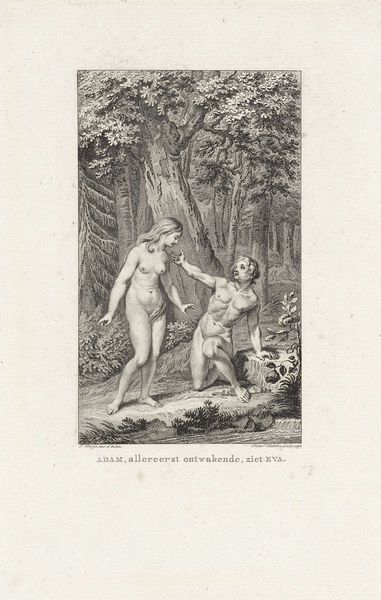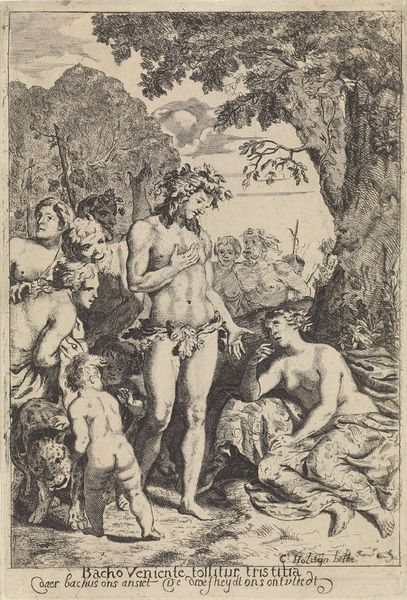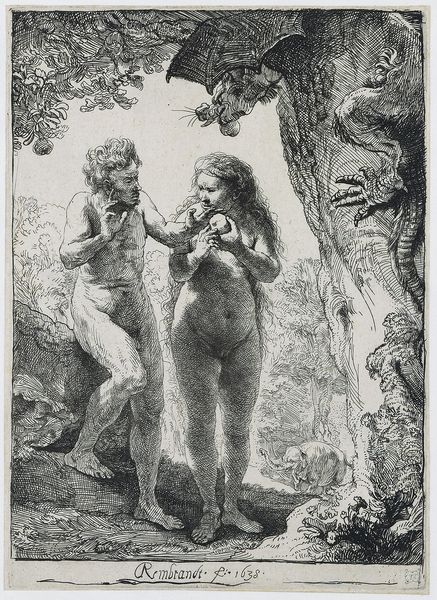
drawing, coloured-pencil
#
drawing
#
coloured-pencil
#
landscape
#
charcoal drawing
#
coloured pencil
#
nude
Copyright: Public Domain: Artvee
Curator: This colored pencil and charcoal drawing is titled Daphnis and Chloë, crafted by Jean-François Millet. The drawing depicts a couple within a pastoral setting. What's your first impression? Editor: An immediate sense of reverie. The sketch-like quality gives it an unfinished, almost dreamlike atmosphere, further emphasized by the use of colored pencils that imbue a soft, diffuse light to the depicted landscape. It looks as though the artist were capturing an intimate moment, a subtle emotional connection, or something else entirely fleeting and fragile. Curator: Indeed. The softness derives significantly from the medium, creating an approachable, rather unassuming treatment of a Classical subject, very accessible, and yet, simultaneously quite charged. The visible drawing strokes and the muted color palette reinforce that accessibility. However, there are social and art historical precedents to be aware of when interpreting it. Editor: I concur. I also can’t help but note the strong division within the piece: nature is presented via light, curvilinear and dynamic strokes versus more sharp edges depicting Daphnis and Chloë themselves. Could you unpack further that classical theme here and why it has persisted as a trope? Curator: Well, Daphnis and Chloë as a classical pastoral romance provided ample fodder for artists seeking to explore idealized love, youth, and a connection to nature. Millet, notably associated with rural and peasant subjects, reinvents these subjects into new types—not quite religious, and not secular, but rather invested in imbuing the landscape with their emotions. Editor: Precisely. It's the tension between that romantic idealization and a grounded, almost unidealized depiction of the two figures, the subjects, in that intimate pastoral space that resonates. In viewing the formal, you get a sense for what can't, or won't, quite be rendered realistically—and in some ways this heightens the sentimentality of the artwork for the modern viewer, like someone looking in on a time that never was. Curator: It also prompts a deeper appreciation of Millet's formal capabilities to invoke powerful ideas about landscape, genre, and gender while continuing a vital engagement with tradition. Editor: Absolutely, seeing how technique shapes that story truly lets me further appreciate the work’s cultural richness. Thanks for this new perspective!
Comments
No comments
Be the first to comment and join the conversation on the ultimate creative platform.
